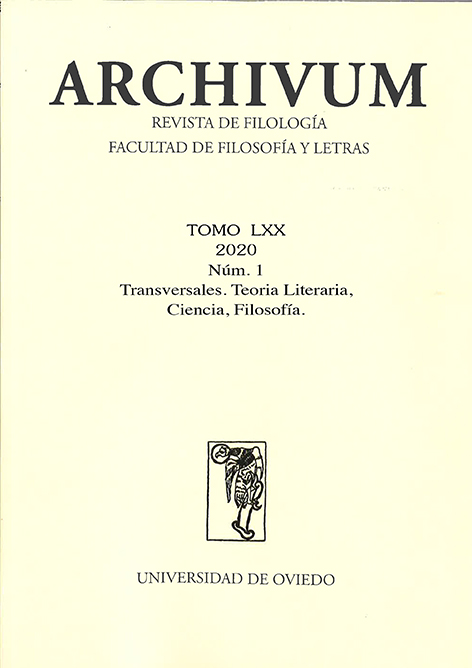Abstract
The work we present arises from a concern shared by a team of academics about the difficulties in reading learning of Dominican children, which resulted in the search for solutions based on the most innovative proposals of the cognitive neurosciences that Stanislas Dehaene points out, a prestigious exponent of this discipline of study.
This perspective of transdisciplinary study leads us, on the other hand, to review the scientific results about the relationship between the literary fact and the theory of the mind, with the purpose of designing experimental applications in the classroom that are efficient and of proven validation . Among the reviewed articles stand out those that show that the reading of literary texts of good quality strengthens the cognitive processes in the formation of heterometacognitive skills, as well as the studies that focus on the analysis of the understanding of the metaphor from the perspective of the neurosciences.
References
Carrillo-García, M. E. y Martínez-Ezquerr, A. (2018). “Neurodidáctica de la Lengua y la Literatura”. Revista Iberoamericana de Educación, 78-1, 149-164.
Comer Kidd, D. & Castano, E. (2017) Reading Literary Fiction Improves Theory of Mind https://blogs.baruch.cuny.edu/literatureandthebrain/files/2017/01/Kidd13.pdf (Consultado 8 de enero de 2019)
Crespo, N.; Benítez, R.; Pérez, L. (2010). “Conciencia metapragmática y la habilidad para producir narraciones escritas”, Revista Signos, vol. 43, no 73, 179-209.
Dehaene, S. (2009). Reading in the brain. New York: Penguin.
Dehaene, S. (2015). Aprender a leer: de las ciencias cognitivas al aula. Argentina, Siglo XXI Editores.
Dehaene, S. (2017). El cerebro lector. Ultimas noticias de las neurociencias sobre la lectura, la enseñanza, el aprendizaje y la dislexia. Traducción de Mª Josefina D’ Alessio, Argentina, Siglo XXI Editores, 3º ed.
Dehaene, S. (2018). “Aprender a aprender: curiosidad, libertad, educación y experimentación Stanislas Dehaene. Discurso de recepción del doctorado Honoris Causa de la Universidad Autónoma de Santo Domingo”. Enfoques, Investigación Lingüística y Literaria, vol. I, núm. 1, 50-54.
Faust, M.; Kenett, Y. N. (2014). “Rigidity, chaos and integration: hemispheric interaction and individual differences in metaphor comprehension”. Frontiers in human neuroscience, 2014, vol. 8,
Kenett, Y. N.; Gold, R.; Faust, M. (2018) “Metaphor comprehension in low and high creative individuals”. Frontiers in psychology, 2018, vol. 9, art. 482, 1-10.
OECD (2010), La comprensión del cerebro: El nacimiento de una ciencia del aprendizaje, Universidad Católica Cardenal Raúl Silva Henríquez, Santiago de Chile, https://doi.org/10.1787/9789567947928-es. (Consultado 12/1/2019)
Flotts, M. P., Manzi, J., Jiménez, D., Abarzúa, A., Cayuman, C., & García, M. J. (2015). Informe de resultados TERCE: logros de aprendizaje. UNESCO Publishing.
González Tapia, C. (2016). Neuroeducación y lingüística: una propuesta de aplicación a la enseñanza de la lengua materna. Tesis Doctoral. Universidad Complutense de Madrid.
Luis, F. (2008). El papel del arte como protector de las funciones cerebrales. La música, la pintura y la escritura facilitan la capacidad de reserva cerebral. Revista mexicana de neurociencia, 2008, vol. 9-2, 154-158.
Hawayek, A. (2010). “La lingüística en la neurociencia cognitiva: cerebro y lenguaje”. En: De la Mora Ochoa (coord.): Rumbos de la lingüística. Lenguas amerindias, adquisición del lenguaje, relación lenguaje-cerebro, filología. México, Universidad Autónoma Metropolitana-Unidad Azcapotzalco, 139-161.
Higuera, J. G.; Díaz, P. G.; Del Cerro, E. P. (2015) Utilización de integración del arte en los cuidados de enfermería. Tesis Doctoral. Universidad Complutense de Madrid. Kid, D. C. y Castano, E. (2013). Reading literary fiction improves theory of mind. Science, 2013, vol. 342 - 6156, 377-380.
Premack D, Woodruff G. (1978). “Does chimpanzee have a theory of mind?” Behavior Brain Sciences; 4, 9-30. DOI: https://doi.org/10.1017/S0140525X00076512 (Consultado 10 de enero de 2019).
Rodríguez, S. M. & Gallart, C. T. (2017). “Estimulación de la metacognición en la educación infantil mediante el lenguaje metafórico”. International Journal of Developmental and Educational Psychology (Revista INFAD de Psicología), 6(1), 511-518.
Tirapu-Ustárroz, J. Pérez-Sayes, G.; Erekatxo-Bilbao, M. y Pelegrín-Valero, C. (2007) “¿Qué es la teoría de la mente?” Revista de Neurología, 44 (8): 479-489
Tirapu-Ustárroz, J., García-Molina, A., Luna-Lario, P., Roig-Rovira, T., & Pelegrín-Valero, C. (2008). “Modelos de funciones y control ejecutivo”. Revista de neurología, 46(11), 684-692

